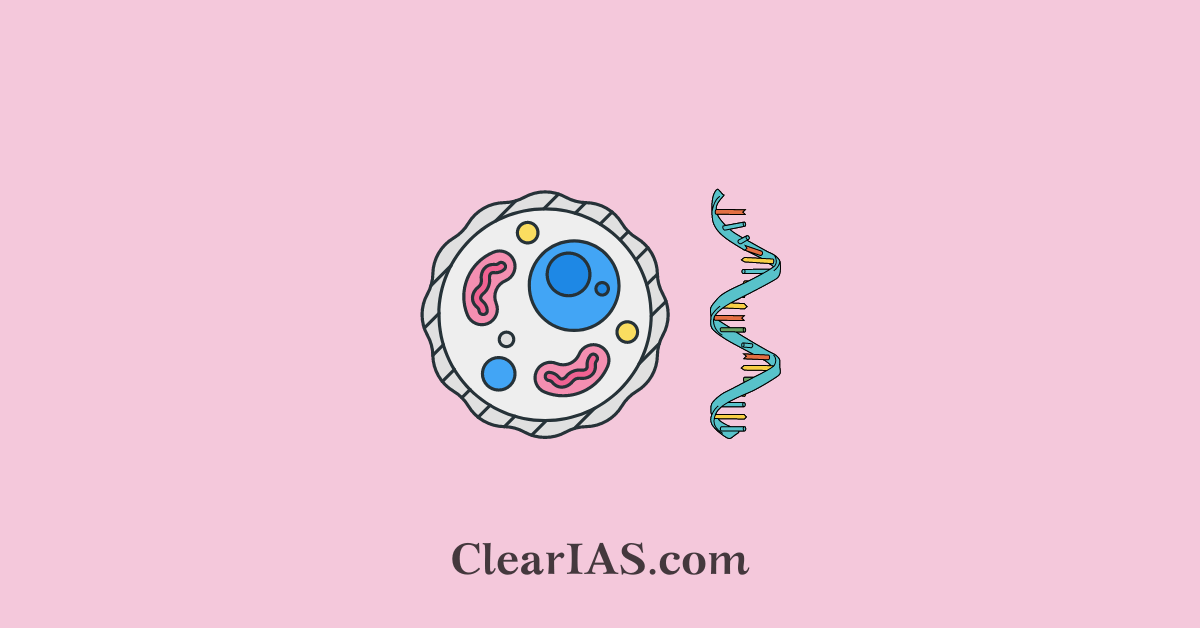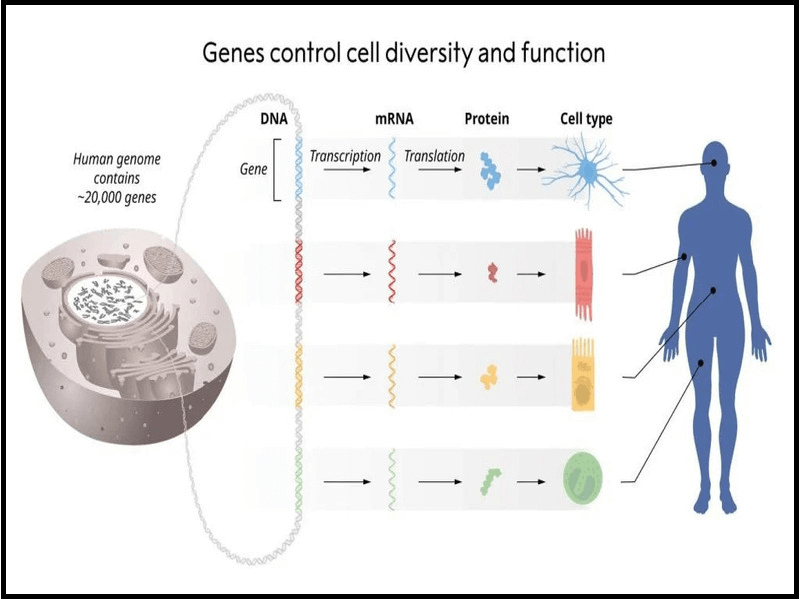
US scientists Victor Ambros and Gary Ruvkun won the 2024 Nobel Prize in Physiology or Medicine for the discovery of microRNA and its crucial role in how multicellular organisms grow and live. Read here to learn about microRNA and gene regulation.
MicroRNAs are a significant scientific breakthrough.
The work by Ambros and Ruvkun helped explain how cells specialise and develop into different types, such as muscle and nerve cells, even though all the cells in an individual contain the same set of genes and instructions for growing and staying alive.
These small, non-coding RNA molecules play a key role in gene regulation by binding to messenger RNAs (mRNAs) and influencing their expression, which has profound implications for development, disease, and cellular function.
What are microRNAs?

The discovery of microRNAs occurred in the early 1990s when researchers found that certain small RNA sequences could regulate gene expression in the nematode C. elegans.
- In particular, the discovery of lin-4 and let-7, the first known microRNAs, provided insight into the mechanism of gene silencing.
MicroRNAs (miRNAs) are a class of small, non-coding RNA molecules, typically around 20-22 nucleotides in length, that play a crucial role in gene regulation.
- They regulate gene expression post-transcriptionally by binding to complementary sequences on target messenger RNAs (mRNAs), usually leading to the degradation of the mRNA or inhibition of its translation into proteins.
Gene regulation
Gene regulation refers to the process by which a cell controls the expression of its genes, determining when, how much, and which genes are turned on or off.
It is essential for cellular function, development, and adaptation to the environment.
This regulation occurs at different levels:
- Transcriptional Regulation:
- The primary control point is the regulation of transcription, the first step in gene expression, where DNA is transcribed into messenger RNA (mRNA).
- Transcription factors: Proteins that bind to specific DNA sequences to either promote or inhibit the transcription of genes. These factors respond to various signals like hormones, stress, or nutrients.
- Promoters and enhancers: DNA sequences that transcription factors bind to, enabling the recruitment of RNA polymerase, which initiates transcription.
- Epigenetic mechanisms: DNA methylation and histone modification can modify the chromatin structure, making genes more or less accessible for transcription.
- Post-Transcriptional Regulation:
- After transcription, several mechanisms control gene expression by modifying mRNA.
- Alternative splicing: The same mRNA precursor can be spliced in different ways to produce different protein isoforms, increasing protein diversity.
- RNA interference (RNAi): Small RNA molecules (such as miRNA or siRNA) can bind to mRNA and either degrade it or inhibit its translation into proteins.
- mRNA stability: The stability of mRNA determines how long it is available for translation. Some mRNAs are rapidly degraded, while others are more stable, affecting protein production.
- Translational Regulation:
- Once mRNA reaches the ribosomes, gene regulation can also occur during protein synthesis (translation).
- Regulatory proteins and small RNA molecules can influence the efficiency of translation by binding to mRNA or the ribosome, affecting the rate of protein production.
- Post-Translational Regulation:
- After a protein is produced, its activity can be regulated.
- Protein modifications: Chemical modifications like phosphorylation, ubiquitination, or acetylation can alter a protein’s function, stability, or localization within the cell.
- Protein degradation: Proteins can be targeted for degradation via the ubiquitin-proteasome pathway, which can remove damaged or unneeded proteins from the cell.
Importance of Gene Regulation
- Development and differentiation: Gene regulation enables a single cell to develop into a multicellular organism with different cell types. Each cell type expresses a unique set of genes that determine its function.
- Response to the environment: Cells adapt to changes in their environment (e.g., stress, temperature, nutrients) by regulating the expression of genes that help them cope with these changes.
- Disease: Dysregulation of gene expression is often linked to diseases such as cancer, where genes controlling cell growth and division are misregulated, or genetic disorders caused by mutations in regulatory elements.
Gene regulation is fundamental to biology, helping maintain homeostasis and allowing organisms to respond flexibly to internal and external cues.
Significance of microRNAs in Gene Regulation
- Regulating Gene Expression: miRNAs fine-tune gene expression by preventing the translation of specific mRNAs. This control is essential for normal cellular functions and developmental processes.
- Development and Differentiation: miRNAs are involved in controlling the timing of cell differentiation and development. They contribute to the regulation of key genes responsible for various developmental pathways, such as stem cell maintenance, organogenesis, and tissue patterning.
- Role in Disease: Dysregulation of miRNAs has been linked to numerous diseases, including cancers, cardiovascular diseases, and neurodegenerative disorders. In cancer, for example, certain miRNAs can function as oncogenes (tumour-promoting) or tumour suppressors.
- Apoptosis and Cell Proliferation: miRNAs also influence apoptosis (programmed cell death) and cell proliferation, processes vital for maintaining tissue homeostasis and preventing tumorigenesis.
- Immune Function: miRNAs play a crucial role in regulating immune responses, affecting how the body reacts to infections and inflammation.
Applications and Future Implications
- Therapeutic Potential: Due to their regulatory roles, miRNAs are being investigated for their potential in therapeutic applications. Targeting miRNAs could offer new strategies for treating diseases such as cancer, where miRNA levels are often dysregulated.
- Biomarkers: miRNAs are also explored as biomarkers for disease diagnosis, prognosis, and monitoring treatment responses. Their stability in body fluids makes them promising candidates for non-invasive diagnostic tools.
Conclusion
MicroRNAs are critical in controlling gene expression, maintaining normal physiological processes, and their dysregulation is associated with several diseases.
The discovery of miRNAs has opened new avenues for research and therapy in molecular biology and medicine.
Frequently Asked Questions (FAQs)
Q. How is microRNA different from mRNA?
Ans: MicroRNA (miRNA) is a type of non-coding RNA (RNA that does not encode a protein) with a length of about 22 bases. It binds to a complementary sequence in the 3’ end of mRNA (coding RNA), and thereby regulates the gene expression. It is said that 30-50% of all genes are regulated in this manner.
Q. What are siRNAs?
Ans: siRNA is a double-stranded RNA molecule that is non-coding. It is also known as silencing RNA and short interfering RNA. It is similar to microRNA (miRNA) and the structure is short and well-defined, usually between 20 and 24 base pairs or thereabouts. Their structure has hydroxylated 3’ and phosphorylated 5’ ends.
Q. What is the basic principle of gene regulation?
Ans: Gene regulation is how a cell controls which genes, out of the many genes in its genome, are “turned on” (expressed). Because of this, each cell type in your body has a different set of active genes – despite the fact that almost all the cells of your body contain the exact same DNA.
Related articles:
- Genetic engineering
- Gene editing: What is CRISPR-Cas9?
- Genome sequencing
- Bridge recombinase mechanism
-Article by Swathi Satish






Leave a Reply